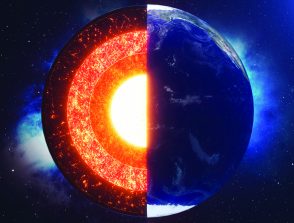Séminaire de Thème – Rheology of the solid Earth: the quest for ultra-low strain-rates
28/03/2024
IPGP - Îlot Cuvier
14:00
Séminaires thème Intérieurs de la Terre et des planètes
Salle 310
Patrick Cordier
Université de Lille
Also on Zoom: https://u-paris.zoom.us/j/3129957938?pwd=S2lISUFkSzVXNk52UFNYS1pzRkN2dz09
The dynamics of our planet depend essentially on its capacity to deform under the action of external or internal forces. Seen from the angle of mineral physics, the rheology of the mantle raises the question of the mechanical behavior of the relevant phases under the relevant mechanical conditions. The critical question of strain rate is usually addressed by extrapolating the rheological laws determined experimentally. However, this approach is fraught with difficulties due to the diversity of mechanisms and their sensitivity to strain rate.
This presentation will be divided into two parts, presenting two very different approaches we have developed to overcome these limitations and better constrain rheological behavior at very low tectonic strain rates.
The first is numerical, and was proposed in the RheoMan ERC project. It assumes that we have a fairly mature theoretical description of deformation mechanisms, and exploits current numerical computing capabilities. Applied to the two major phases of the lower mantle, this approach first shows that pressure strongly inhibits dislocation glide in bridgmanite. This led us to propose the existence of another deformation mechanism under mantle conditions: pure climb creep. For periclase, dislocation glide remains possible, but it's anionic diffusion that is severely inhibited by pressure. In the end, our calculations lead to the very counter-intuitive view that in the mantle, bridgmanite is more deformable than periclase.
The second approach taken in the TimeMan project is to exploit the potential of small-scale micromechanical testing. We will present the application of various unconventional micromechanical tests to the rheology of olivine glass. We show that it is possible to achieve strain rates close to 10-12 s-1.





